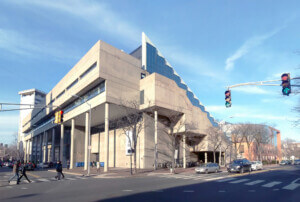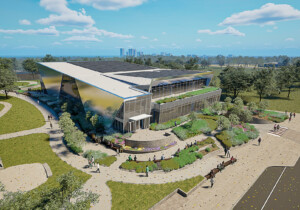This weekend, architects, artists, educators, activists, scholars and students convened at Harvard for the second Black in Design Conference: Designing Resistance, Building Coalitions, an event that recognizes the African diaspora’s contributions to the built environment and discusses how designers can dismantle institutional barriers within the profession.
The Harvard University Graduate School of Design‘s African American Student Union (GSD AASU) organizes the three-day event, which was last held in 2015. This year, the conference engaged design in its broadest sense to discuss design as resistance and explore how the designers’ activism, particularly the work of black and brown designers, is building “more radical and equitable futures.” At the 2015 conference, architect and planner Justin Garrett Moore highlighted a speaker’s comment to underscore how Black in Design creates a necessary space for dialogue and debate: “[Black] designers do not yet have the weight of influence seen in other creative fields, such as music or fashion, that shape and inform our larger culture and everyday lives.”
On Friday, attendees convened to hear LAXArt Executive Director Hamza Walker open the conference with his keynote speech, while Black Lives Matter activist DeRay Mckesson closed the event with a Sunday keynote that delved into design’s role in combatting injustice.
T he Architect’s Newspaper (AN) spoke with conference participants Daphne Lundi and Emma Osore of BlackSpace, a New York City group for emerging black professionals whose work shapes the built environment. This weekend, the group hosted a lunch and discussion around the conservation and preservation of black spaces, where participants from all stages of their careers networked and shared resources.
Both attended Black in Design in 2015, but this time, their group came as a collective, 12 strong. “The conference was still a space for us to learn about black practice in design,” Lundi said, “but this year it was a more intentional space for black designers to figure out how to incorporate social justice into their practice and move it to the forefront of their work.”
Now @blackspacenyc shares their work having originated from Black in Design 2015. We hope they inspire future collectives! #BiD2017 pic.twitter.com/gPlQwqgVaL
— Harvard GSD AASU (@GSDAASU) October 8, 2017
For Lundi, an urban planner at the NYC Department of City Planning, and Osore, the most energizing presentations were by landscape architect Walter Hood and Diane Jones Allen, the program director for Landscape Architecture, the College of Architecture Planning, and Public Affairs at the University of Texas at Arlington, who spoke about her work in New Orleans’s Lower Ninth Ward.
“One thing that’s fulfilling about the Black in Design conference is its focus on people,” said Osore, an artist and program coordinator at the Arts & Business Council of New York. “The conference really elevated black creators across the spectrum of the arts.” She said artist and writer Brandon Breaux‘s session as well as poet Roger Bonair-Agard‘s talks were particularly interesting.
“It’s about drops in a bucket not a silver bullet” and knowing that “hope is work, not magic.” #BlackinDesign #BiDesign2017 #iteams pic.twitter.com/i3yyqYJiDg
— Sabrina Dorsainvil (@oh_sabeedee) October 8, 2017
Hosting the conference at an institution like Harvard is important to centering and revering black people and stories, a point Osore relayed from a BlackSpace lunch participant. To that end, the GSD’s Frances Loeb Library is assembling the African American Design Nexus, an online archive that will survey the history of black architects practicing in the U.S.
Missed this year’s event? The next Black in Design conference will be held in 2019, but in the meantime, readers can visit blackindesign.org for more information on the conference or search #BlackinDesign #BiD2017 on Twitter for the weekend’s real-time program highlights.










